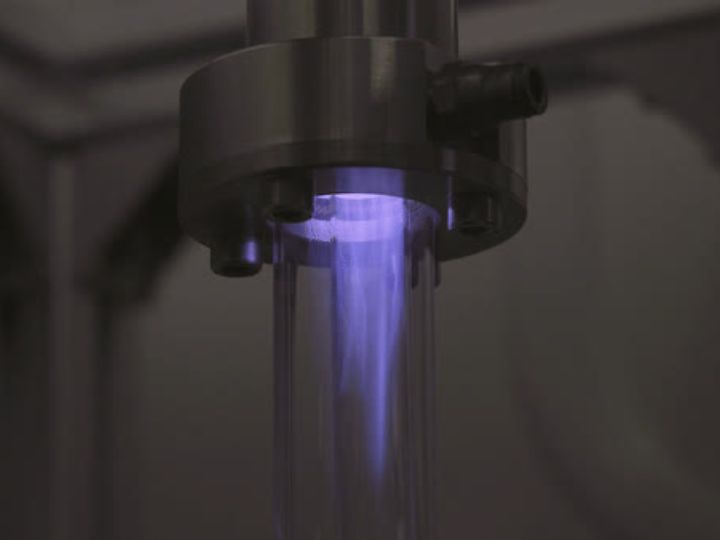As the world races to combat environmental degradation and climate challenges, transitioning to renewable energy has become a top priority. However, the inconsistent nature of wind, solar and other renewable sources poses a significant challenge to maintaining a stable energy supply, which has slowed the transition.

An interdisciplinary team of scientists is collaborating to find a workable solution by harnessing the power of artificial intelligence and microwave plasma, and blending knowledge from chemistry, materials science and engineering.
The National Science Foundation awarded a $1 million grant to this project, titled “Multidisciplinary High-Performance Computing and Artificial Intelligence Enabled Catalyst Design for Micro-Plasma Technologies in Clean Energy Transition.”
This project aims to leverage machine learning for catalyst discovery and develop new characterization methods for studying chemical reactions under extreme conditions such as plasma, one of the four states of matter, which is an ionized state consisting of positively charged ions and negatively charged electrons. The goal is to improve the efficiency of catalysts in hydrogen generation, carbon capture and energy storage.
The University of Houston team includes Jiefu Chen, associate professor of electrical and computer engineering, Lars Grabow, professor of chemical and biomolecular engineering, Xiaonan Shan, associate professor electrical and computing engineering and Xuquing Wu, associate professor of information science technology. They are collaborating with Su Yan, an associate professor of electrical engineering and computer science at Howard University.

“By enhancing the efficiency of catalytic reactions in key areas such as hydrogen generation, carbon capture and energy storage, this research directly contributes to these global challenges,” said Chen, the principal investigator of the project. “This interdisciplinary effort ensures comprehensive and innovative solutions to complex problems.”
Project Details
Discovering materials for new catalytic processes is a slow and challenging task, requiring expertise in various disciplines such as robotics, AI, material science, synthesis, testing and modeling. The researchers plan to assemble a robotic synthesis and testing facility while simultaneously programming the AI model for unsupervised learning.
Automating the experimental testing and verification process with robotic facilities will make the catalyst design process much more efficient by closely integrating theory and experiments through advanced, unsupervised machine learning techniques, according Shan and Wu.
The project has four major research thrusts:
- Machine learning driven catalyst discovery for plasma assisted chemical reactions: The team will use a graph neural network model trained on the Open Catalyst Project dataset to discover promising materials for plasma-assisted catalytic reactions.
- Multiscale and multiphysics microwave-plasma simulation: New methods will be developed to model and simulate complex interactions involving electromagnetics, plasma physics and thermodynamics at various scales, including studies of micro-plasma heating with different catalysts to better understand the microwave-plasma assisted heating phenomena.
- Design, synthesize and characterization of the catalyst support material and architecture: The researchers will optimize catalyst supports for efficient microwave-assisted reactions, such as pyrolysis and steam reforming, and to improve methane conversion by controlling micro-plasma efficiency. The goal is to facilitate micro-plasma generation and improve energy conversion efficiency.
- Bench scale demonstration of efficient reactions using the micro-plasma catalyst system: The researchers will establish a bench scale reactor to further demonstrate the efficiency of the designed and optimized catalyst support system.

Another important component is establishing a multidisciplinary research and education program involving machine learning, computational catalysis, applied electromagnetics and material synthesis and advanced characterization. It will serve to educate and train the next generation STEM workforce.
“This project will help create a knowledgeable and skilled workforce capable of addressing critical challenges in the clean energy transition,” Grabow said. “Moreover, this interdisciplinary project is going to be transformative in that it advances insights and knowledge that will lead to tangible economic impact in the not-too-far future.”
He said the team is open to partnering with industry on related projects and further development during and after the project.